
On the Webster-Eddy food pantry’s opening morning, Japantown was cool and foggy, typical for San Francisco summer. Neighbors lined up along the chain link fence, eager to pick up fresh fruits and vegetables within walking distance of their homes. San Francisco-Marin Food Bank volunteers buzzed with first-day jitters, but operations ran smoothly under lead volunteer Katie’s steady hand.
She kept her cool through the bustle, checking in with Food Bank staff to confirm registration was ready and guiding volunteers on where unboxed produce should go. Katie even found time to set up a hand-lettered sign with the pantry’s name, a small touch that made the site feel welcoming from the start.
Her commitment to helping her community started long before that morning.
As a child, Katie’s mom encouraged her and her siblings to volunteer at their hometown food bank, planting the seed for a lifelong passion for giving back. About five years after moving to San Francisco, she felt compelled to spring into action again during the COVID-19 pandemic, when the Food Bank launched Pop-Up Pantries across the city in response to surging need.
Those early days, she remembers, were hectic but vital for her neighbors. “It was busy, but it was really great,” Katie says. “A lot of people were getting access to food who hadn’t had it before.”
When Katie learned that Pop-Up Pantries would be closing due to funding cuts, she and her fellow volunteers worried about where their neighbors would turn for food. Instead of walking away, they decided to act.
“We were disappointed and just asked, ‘Hey, what would it take to keep this going?’” she recalls.
With the Food Bank’s guidance and a church partner providing space, Katie helped lead the effort to create a permanent food pantry.
“Food is a basic need,” she says. “Everyone should have access to food. It’s important to me to be able to support that.”
While she’s grateful to be able to meet the urgent need she sees now, she’s also thinking about the future: Congress voted to slash $186 billion from the Supplemental Nutrition Assistance Program (SNAP) over the next decade, and the weight of those cuts is already being felt.
“I think the one that’s really tough for me to understand is cutting food access,” Katie says. “Most people, if you talk to them, would say they support people having access to food. The thing that’s unfortunate is seeing politics hamper that. A lot of people don’t understand that cutting dollars to food banks means people will not be eating. This isn’t just stuff happening in Washington, D.C. These are decisions affecting my town, my city, my block, my neighbors.”
Despite her frustration, Katie remains hopeful. She believes her neighbors want to help, and that once they move past the fear of committing to something, they’ll feel proud of their impact. She also sees group volunteer opportunities, like those at the Food Bank, as a way to ease the pressure.
“If you know you won’t be alone, it’s a lot less scary,” she says. “And what’s the worst that can happen? Even if it doesn’t go perfectly, you’ve still helped more people than if you did nothing.”
That belief is one of the many reasons Katie keeps showing up without fail.
“Honestly, it’s been a huge help for my mental health to feel like I am part of something,” she says. “And the Food Bank’s support has made it all possible. I’m running this site, but I couldn’t do it without them. They’re the ones making sure the food is here every week.”


 When people think about seaside towns in Marin County, they often conjure up visions of luxury. But nestled just below the Point Reyes National Seashore is the tight-knit town of Bolinas, where the reality is quite different.
When people think about seaside towns in Marin County, they often conjure up visions of luxury. But nestled just below the Point Reyes National Seashore is the tight-knit town of Bolinas, where the reality is quite different. The steady supply of food is what makes the 13-year partnership between the Bolinas Community Inc. food pantry and the San Francisco-Marin Food Bank essential. More than 200 people come through the pantry each Thursday, relying on the shelf-stable staples and fresh produce. And for many, the chance to connect is just as much of a lifeline.
The steady supply of food is what makes the 13-year partnership between the Bolinas Community Inc. food pantry and the San Francisco-Marin Food Bank essential. More than 200 people come through the pantry each Thursday, relying on the shelf-stable staples and fresh produce. And for many, the chance to connect is just as much of a lifeline. For Alfonz, a longtime participant managing serious health conditions, the pantry is essential to his stability. “I used to go in every day to the emergency room because something went wrong every day,” he recalls. But now that he’s able to eat the healthy food he needs to manage his symptoms, his quality of life has improved.
For Alfonz, a longtime participant managing serious health conditions, the pantry is essential to his stability. “I used to go in every day to the emergency room because something went wrong every day,” he recalls. But now that he’s able to eat the healthy food he needs to manage his symptoms, his quality of life has improved. A lot has changed since Carolyn and Stephen started giving to the Food Bank in 1995, but their commitment to making an impact — and Carolyn’s passion for smart financial giving — hasn’t wavered.
A lot has changed since Carolyn and Stephen started giving to the Food Bank in 1995, but their commitment to making an impact — and Carolyn’s passion for smart financial giving — hasn’t wavered.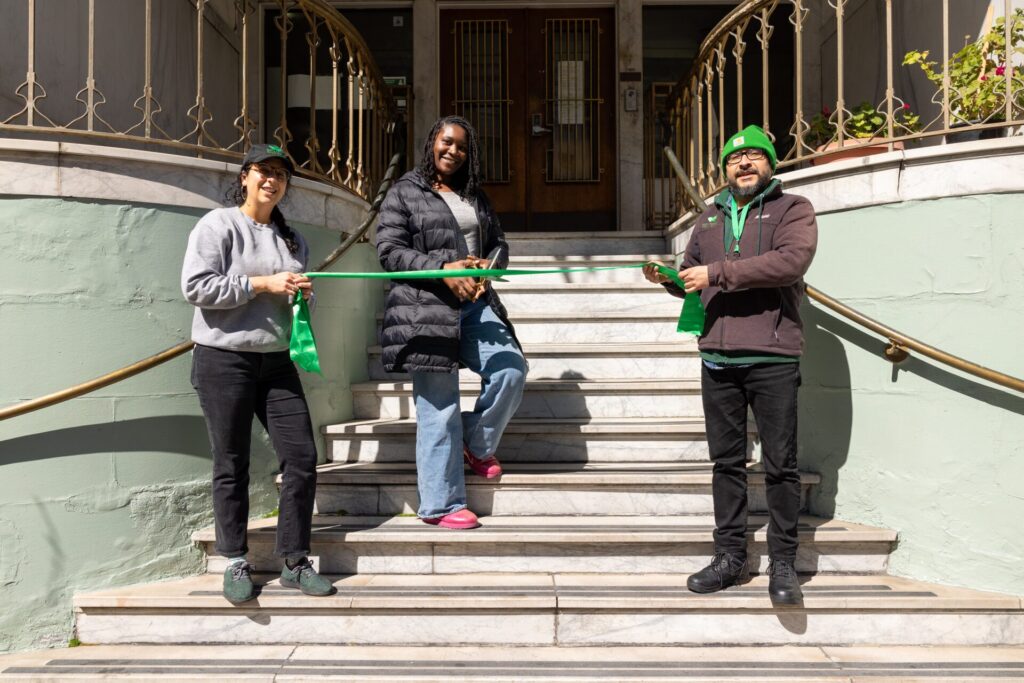 At the Food Bank, we know that food insecurity doesn’t happen by chance. It’s the result of deeper issues like poverty, housing insecurity, and systemic inequality. That’s why we’re proud to partner with Mary Elizabeth Inn, an organization that knows it takes more than meals to create lasting change.
At the Food Bank, we know that food insecurity doesn’t happen by chance. It’s the result of deeper issues like poverty, housing insecurity, and systemic inequality. That’s why we’re proud to partner with Mary Elizabeth Inn, an organization that knows it takes more than meals to create lasting change.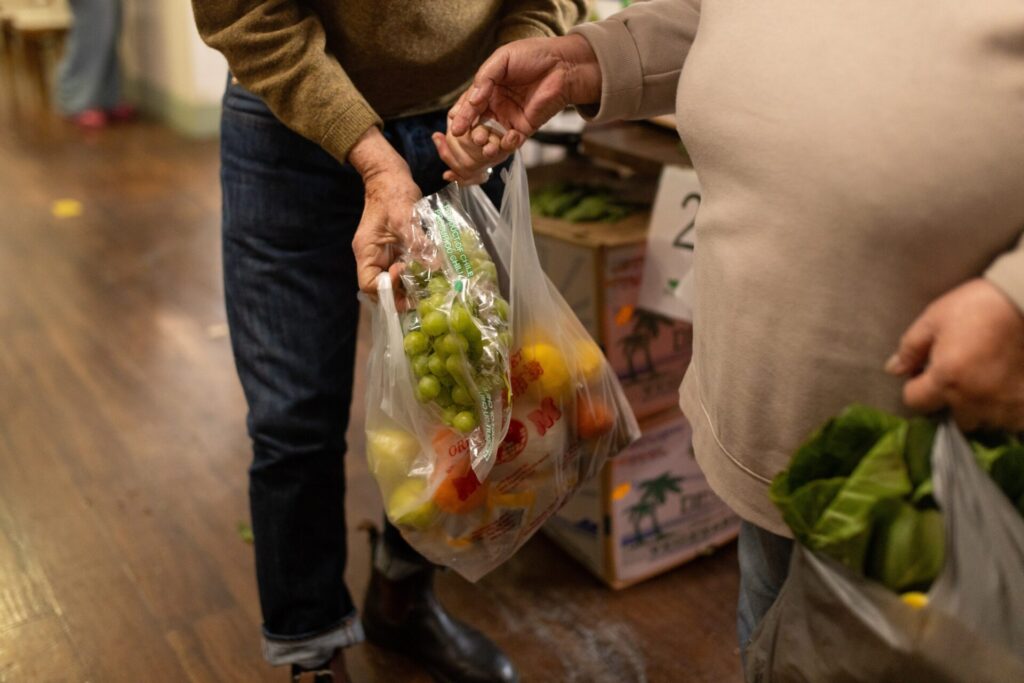 best part about the pantry is that we can tell them where the food is coming from,” said Ebony. “It’s farm fresh, and it’s not going to expire tomorrow. Tables and tables full of vegetables, protein, milk, and more. Way better.”
best part about the pantry is that we can tell them where the food is coming from,” said Ebony. “It’s farm fresh, and it’s not going to expire tomorrow. Tables and tables full of vegetables, protein, milk, and more. Way better.”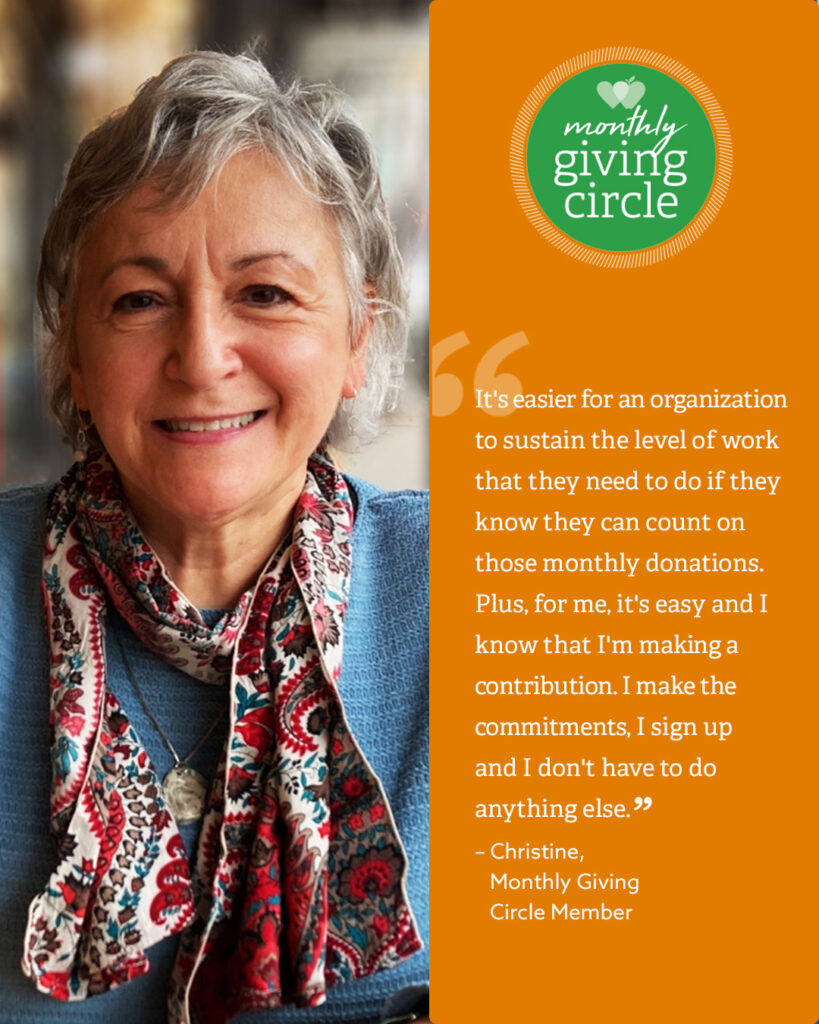 For Christine, a member of our Monthly Giving Circle, showing up for her neighbors is second nature.
For Christine, a member of our Monthly Giving Circle, showing up for her neighbors is second nature.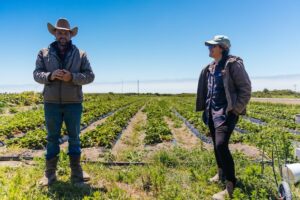 “[We want] to make organic food from small and medium farms not a luxury, but something widely accessible,” says Veronica. “Our model is designed to take that step back from the final consumer, connecting small farms to institutions like the Food Bank to broaden access to fresh, local food.”
“[We want] to make organic food from small and medium farms not a luxury, but something widely accessible,” says Veronica. “Our model is designed to take that step back from the final consumer, connecting small farms to institutions like the Food Bank to broaden access to fresh, local food.”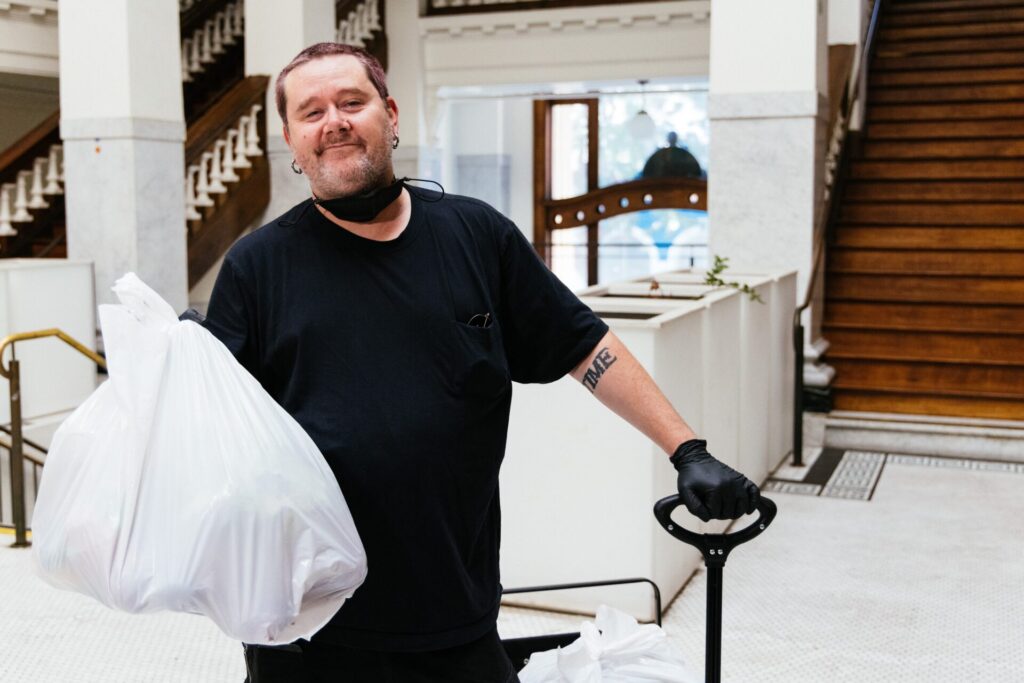

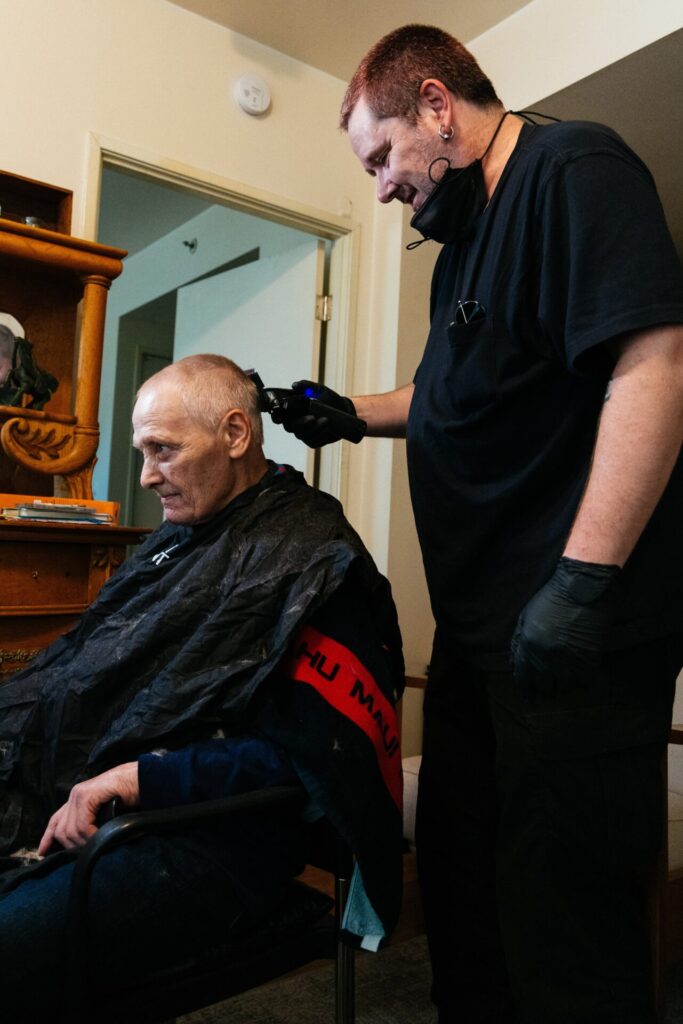
 Once a week, a familiar face stops by a neighborhood food pantry in the Richmond district for an afternoon volunteer shift: coordinating the check-in process, breaking down cardboard, and helping share groceries with hundreds of neighbors each week.
Once a week, a familiar face stops by a neighborhood food pantry in the Richmond district for an afternoon volunteer shift: coordinating the check-in process, breaking down cardboard, and helping share groceries with hundreds of neighbors each week. 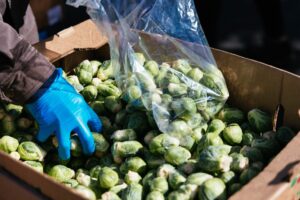 sense that “the sky was falling.”
sense that “the sky was falling.” 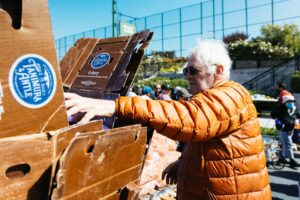 Gary lives on his pension income – so even before record inflation hit, his pre-pandemic grocery routine involved walking to a variety of stores and markets to get the best deals and buy food in bulk. The health risks of the pandemic made this routine impossible for him, but home-delivered Food Bank groceries helped Gary offset the pressure on his budget and stay nourished with fresh vegetables.
Gary lives on his pension income – so even before record inflation hit, his pre-pandemic grocery routine involved walking to a variety of stores and markets to get the best deals and buy food in bulk. The health risks of the pandemic made this routine impossible for him, but home-delivered Food Bank groceries helped Gary offset the pressure on his budget and stay nourished with fresh vegetables. 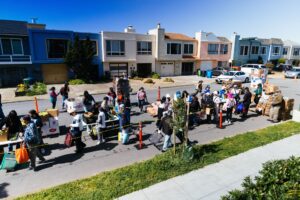 network of support – friends, neighbors and groceries from the Food Bank – Gary was able to stay healthy and safe during the height of the pandemic. But he knows not everyone had that good fortune.
network of support – friends, neighbors and groceries from the Food Bank – Gary was able to stay healthy and safe during the height of the pandemic. But he knows not everyone had that good fortune.
Share